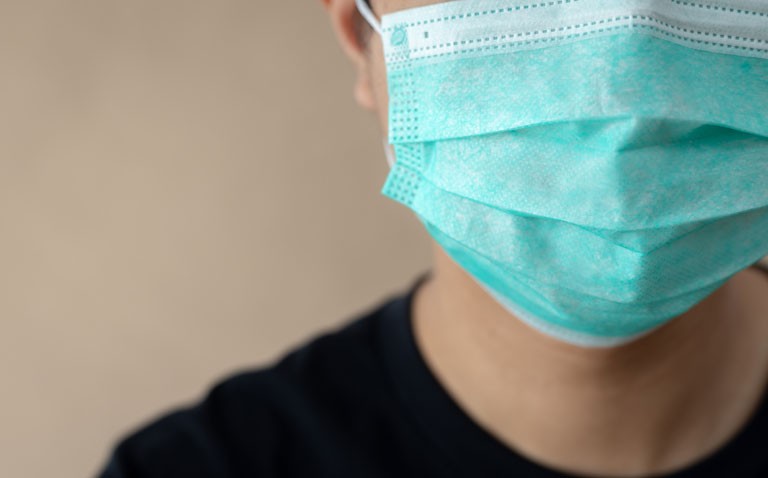The wearing of face masks in those infected with COVID-19 significantly reduced transmission of the virus.
Mitigation strategies designed to reduce the transmission of COVID-19 have included social distancing and the need to wear face masks. The use of a face mask has been shown to reduce the spread of influenza and there is tentative evidence that face mask wearing might reduce transmission of the virus. Nevertheless, no studies have examined the presence of retained virus on the surface of face masks and whether a mask can reduce transmission of COVID-19. With this level of uncertainty, a team from the Viral Hepatitis Laboratory, Oswaldo Cruz Institute, Brazil, sought to evaluate the efficacy of masks, worn by those known to be infected with COVID-19, at preventing transmission of the virus. The team examined samples taken from infected individuals and compared the amount of COVID-19 obtained from nasal and pharyngeal swabs and from the face mask worn by the individual. The mask itself was cut and different areas of the mask tested separately. The team used the cycle threshold (CT) value during PCR, as a measure of viral load. For instance, during a PCR test, the CT represents the number of amplifying cycles necessary to produce a detectable amount of viral RNA. If a sample requires up to 40 cycles for example, the test is deemed to be negative. Hence the lower the CT value, the higher the concentration of viral genetic material and the CT value can be used as a semi-quantitative measure of viral load. For the present study, the team set the CT value at 38, so any values below this number were indicative of a positive result. In addition, since face masks can be both woven and non-woven, a further consideration for the researchers was to try and establish if there were noticeable differences in potential transmission with different types of face masks.
Findings
For the present study, a total of 45 patients of various ages ranging from 20 to 69, were recruited and provided nasal/pharyngeal and mask samples for analysis. The majority of the masks were classed as woven (66.7%) although there was no statistically significant difference in median CT values between woven and non-woven mask fabrics (p = 0.11). Furthermore, COVID-19 viral RNA was only detected on the inner parts of the mask, i.e., the part in contact with the face. The median CT values for the swab samples was 28.41 (range 21.55 – 31.74) and 37.95 for the mask (range 33.50 – 40). With an approximate 10-point lower CT value for swabs compared to masks, the data suggested that there was little, if any viral RNA on the mask. Interestingly, there was a significant difference in CT values for the mask samples between those who presented with and without symptoms (p = 0.004).
Based on these findings, the authors suggested that face mask wearing among those infected with COVID-19 appear to significantly reduce viral transmission and concluded that their data highlighted the importance of mask wearing to limit the spread of COVID-19.
Citation
Mello VM et al. Effectiveness of Face Masks in Blocking the Transmission of SARS- CoV-2: a Preliminary Evaluation of Masks Used by SARS-CoV-2- Infected Individuals. MedRxiv 2021










